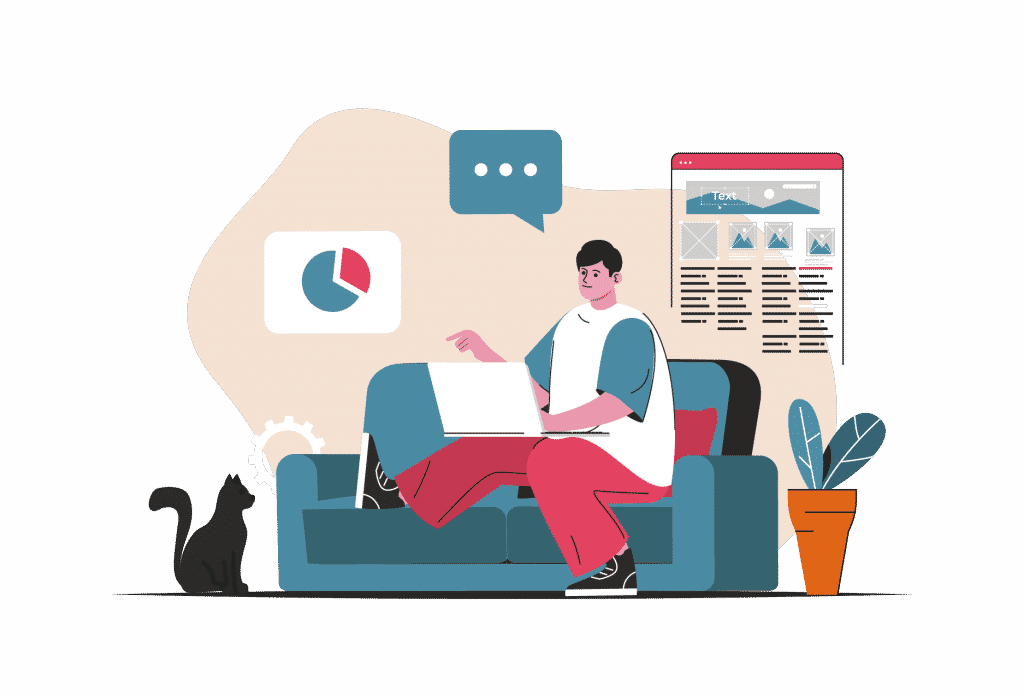SEO Article Writing Service
FOR YOUR .
Are you looking for a good & reliable SEO article writing service? Hire professional article writers for as low as $0.025 per word.

1000+ websites trust us to write their content
SEO Article Writing Service

Blog Writing
Blogging remains one of the best ways to engage your audience. Our team will write compelling blog posts that will keep your fans hooked and wanting more!

Web Pages
Whatever the subject, we deliver engaging website copy written with SEO & conversion in mind. We write this content with the voice of your brand

Product Reviews
We write well-researched product reviews that are perfect for any affiliate marketing website. No product or niche is too difficult for us. We've got you covered.

Articles
Our writers will deliver engaging and informative articles ready to be published on your website and shared on social media.
Flexible Pricing


What Customers Are Saying
Frequently Asked Questions
We charge $0.035 per word for a normal order. That means you pay $35 for a 1000-word article. When you order more than 20,000 words, you will get a 30% discount. We guarantee high-quality articles despite our low prices.
If you are stuck and do not know what topics to choose for your articles, you need to choose our bulk option. That way, we can do the research on your behalf. In fact, this is one of the perks you get when you order from us. We have a trained SEO team that knows how to identify low competition keywords in any niche. Our team uses premium keyword research tools and human reasoning to get this data. We will compile a list of keywords and you can approve them based on what your website or blog is about.
Simply put, yes, they will. Our writers are professional enough to write original and compelling content for you. We also pass all articles through a plagiarism checker to ensure the content you are getting is unique and not fluff copies from other internet sources.
Typically, it takes 1-3 days to complete an order. However, bulk orders may take up to 21 days to complete.
At Content Clerks, customer satisfaction is our number one priority. Despite the fact that our content is top-notch, there are occasions where you need modifications to be made to your content. We take this very seriously and we will revise your articles until you are fully satisfied with our work. Ultimately, you get unlimited revisions every time you use our bulk ordering service
We have a team of over 50 writers who are specialists in various subjects. When you place your order and specify your subject, we assign your content to be written by someone who understands the field. This, coupled with in-depth research on a topic helps us churn out amazing content. Thus, all our content, regardless of subject has a professional feel to it.

Content Clerks Vs Other Article Writing Services
| Content Clerks | Text Royal | Article-Writing.co | Crowd Content | Verblio | |
|---|---|---|---|---|---|
| Pricing (1000 words) Pro level | $35 | $40 | $100 | $88 | $120 |
| Turnaround Time | 3 days | 5 days | Not specified | Not specified | Subscription |
| Discount for bulk orders | Yes | Yes | No | No | No |
| Sign up | No | Yes | Yes | Yes | Yes |
| Dedicated account manager | Yes | No | No | Yes | Yes |
Why consider our professional article writing service?
We have article writers talented in diverse fields. Whether you are looking to have an article written in finance, technology, or parenting, we will match you with a suitable article writer. Moreover, We focus on diversity to allow our clients to have all their article writing needs to be met under one roof. SEO article writing is our core skill. We ensure that we factor in the basics of a good SEO article for each article.
Our writers also focus on thorough keyword research to help you rank even better. Therefore, we incorporate both short and long-tail keywords that help you answer the queries that your target audience types into search engines.
We also do guest post articles. Each article writer that we work with understands external and internal linking. Accordingly, this ensures that your articles can link back to your original site while at the same time contributing positively to your SEO efforts.
Additionally, we assure you of thorough research when you order an article from us. Besides just being experts in their given fields of specialization, our writers appreciate the importance of research.
This allows us to deliver quality content that helps position you as a thought leader in your niche. Therefore, you can count on us to help you contribute positively to the knowledge bank available online through the articles we write for you.
SO, WHAT ARE THE BENEFITS OF WORKING WITH US?
Article writing can provide a return of investment for your business. Consequently, it would help if you had Content Clerks to write for you quality articles that can help grow your business. Here are the benefits of our services.
INCREASED BRAND VISIBILITY
The most important reason for hiring professional article writers is that they help produce quality website content steadily. Hence, you attract more audiences to your brand. Read on to see how our professional article writing service can help you get the online attention you need.
SEARCH ENGINE OPTIMIZATION
SEO can help bring relevant traffic to your website. Our experts usually optimize your articles to enable search engines and users to identify your article quickly. There are various SEO strategies, such as on-page SEO, where our writers use the right keywords. The identification of these keywords comes about through doing in-depth keyword research. Accordingly, our experts will check your competitors’ keywords and familiar words that users search to develop short or long-tail keywords. Thus, your blog becomes a better target for search engines with these keywords, increasing organic traffic to your blog.
SOCIAL MEDIA SHARING
Our professional article writers are thorough and write blogs that appeal to your audience. Hence, the audience can share the content on social media with social groups and people with similar interests. This sharing can be a source of direct traffic.
BACKLINKS
Quality articles can also spark interest in other bloggers in your niche. These bloggers can then link their works to your website. You can only get such high-quality backlinks if you have well-researched and written content. Therefore, Content Clerks can help you achieve this by writing authentic and creative blogs.
LEADS AND SALES GENERATION
Our professional article writing service can also help you convert your website visitors into viable leads and sales. That’s because our article writers focus on delivering value to your blog readers. We don’t give a sales pitch but provide informative articles. Additionally, we also attract potential buyers by making specific content for them. Overall, we help you develop an effective content strategy that focuses on converting leads and increasing sales.
IMPROVED BRAND VOICE
Content Clerks services can help you claim brand authority in the competitive business industry. We make sure that we demonstrate your skills and know-how about the products or services you offer through our articles. Moreover, when your audience reads your content, they become confident as they understand your products and trust you. For instance, we can write articles about how a product works and convince potential buyers to purchase it. Rather than trying to sell to clients, we inform them through your articles. That’s particularly essential in technical fields that usually need technical knowledge such as tax, law, and statistics. Here, readers aren’t looking for fluff but for quality content that helps solve their problems. Therefore, you can develop brand authority through our article writing service.
BROADENED AUDIENCE
If you’ve found yourself targeting a particular audience repeatedly, your company may not grow as expected. Fortunately, our professional article writers can help you reach different audiences and engage them. For example, our experts can explore various research keywords that are similar yet attract different audiences. Additionally, we ensure that your articles are interesting, making it possible for your audience to share social media content efficiently. Hence, you can reach several audiences fast.
Features of Our Article Writing Service
AFFORDABLE
Our services are affordable as well. We usually charge our customers reasonably, understanding that you need to reduce their operational costs. However, note that each article writing project has a special price because of the difference in scope and the quantity of work. To know how much you will pay for our services, you can visit our site or request a quotation.
TRUSTWORTHY
For your content to sell, you need a partner you can trust with the article writing process. Since our company has experienced and skilled professional article writers, you should hire us. We will never fail you, and we’ll always provide solutions if you encounter challenges with your blog. Furthermore, customer satisfaction is our number one priority.
GREAT SUPPORT
You can also reach us whenever you need. We have a team of committed customer care agents that respond to your queries and address the issues you may have. Thus, we will always provide you with the information you require when you need it.
Therefore, if you’re looking for a quality and dependable article writing service, come to Content Clerks.
ON-TIME DELIVERY
At Content Clerks, we always keep time. Our professional article writers are dedicated and take each project with the seriousness it deserves. We always have a work plan that helps us break down your project. Hence, our experts ensure that they meet daily deadlines and write and publish your content on time. We understand that even a slight delay can cause a shift in the mood and loyalty of your audience. So, when you set the deadline, we will deliver. And in case of a delay, we shall inform you early as we solve the problem.
ALL-ROUND SERVICES
We also have qualified experts that can manage all aspects of your blog. While our core focus is on providing article writing services, we can also help you manage your blog by monitoring traffic and the habits of your audience. Hence, that allows us to fine-tune your blog to make it attractive to more readers.

